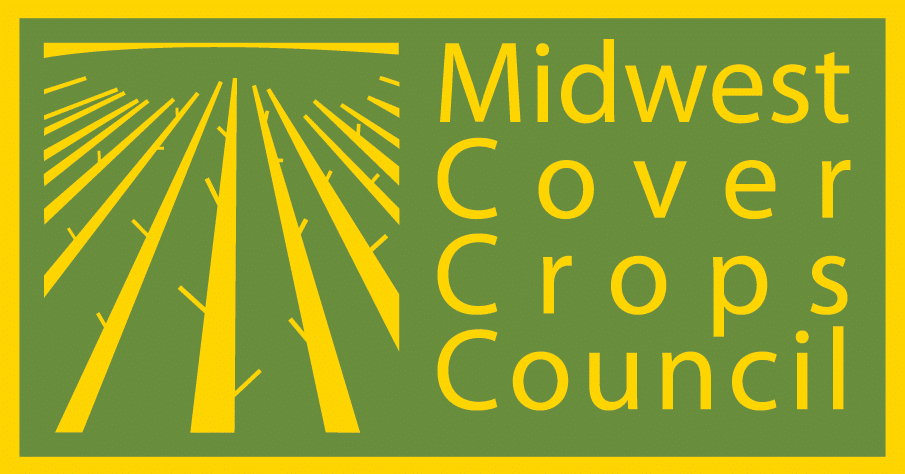Equipment
Equipment plays several critical roles in cover cropping systems. It is important to consider what equipment is available for seeding and terminating cover crops, as well as ensuring that equipment used for seeding and harvesting a cash crop is set up to ensure success of the cover crop and cash crop.

Cover Crop Seeding Equipment
Seeding Method (post/pre harvest) |
Relative Equipment Cost |
Seed Placement |
Integration with Other Field Operations |
Compatible Cropping Systems1 |
Need for Precipitation after Planting |
| Box Drill (post harvest) | Medium | Excellent | None | Row Crop Small Grain Oilseed |
Low |
| Air Drill (post harvest) | High | Excellent | Fall Fertilizer | Row Crop Small Grain Oilseed |
Low |
| Row Crop Planter (post harvest) | High | Excellent | None | Row Crop Small Grain Oilseed |
Low |
| Pendulum Spreader (post harvest) | Low | Fair | None | Row Crop Small Grain Oilseed |
High |
| Dual Spinner Spreader (post harvest) | Low | Marginal | Fall Fertilizer | Row Crop Small Grain Oilseed |
High |
| Air Boom Spreader (post harvest) | High | Fair | Fall Fertilizer | Row Crop Small Grain Oilseed |
High |
| Tillage Seeder Attachment (post harvest) | Low | Good | Fall Tillage | Row Crop Small Grain Oilseed |
Low |
| Combine Mounted Seeder (post harvest) | Medium | Good | Harvest | Row Crop Small Grain Oilseed |
High |
| Sprayer Mounted Air Boom (pre harvest) | High | Fair | In-season Fertilizer | Row Crop Small Grain |
High |
| High Clearance Spreader (pre harvest) | Medium | Marginal | In-season Fertilizer | Row Crop | High |
| Row Based Inter Seeder (pre harvest) | Medium | Good | None | Row Crop | Low |
| Drone Aerial Application (pre harvest) | Medium | Marginal | None | Row Crop | High |
| Plane Aerial Application (pre harvest) | Medium | Marginal | None | Row Crop | High |
1Footnote
Row crops: corn, soybeans, sunflower
Small grain: oats, rye, wheat, triticale, barley
Oilseed: canola, rapeseed, flax
Cash Crop Harvest Equipment Considerations
Setting up your harvest equipment is essential to achieving an even stand of cover crops. An even stand of cover crops is important to ensure effective and timely termination and consistent cash crop planting conditions.
Equipment settings to consider include:
- Residue spreader width
- Chopper residue sizing
- Header cutting height
- Chopping vs non-chopping corn heads

CASH CROP PLANTING CONSIDERATIONS
- Set row cleaners to move cover crop residue out of planting strip, but not to disturb soil.
- Ensure down pressure is adequate to place seed at consistent depth without causing sidewall compaction.
- Check disc openers for wear and replace if outside of manufacturer specifications.
- It may be beneficial to change closing wheel systems when switching to no-till and cover crops. Check with others to see what closing wheels are successful in your soil types.
- To prevent cover crops wrapping on planter parts, wait to plant 10-14 days after cover crop termination or terminate after planting.

Cover Crop Termination Equipment
Termination Method |
Cover Crop Suitability |
Growth Stage Specific Efficacy |
Additional Considerations |
| Sprayer | Effective for all species | Chemistry and species dependent | Follow herbicide label to ensure efficacy |
| Tillage | Effective for nearly all species | Most effective in early growth stages | May need multiple passes |
| Roller crimper | Only effective on select grass species | Effective at heading or flowering stages | Requires a high level of management, can be used with herbicide |
| Mower/haybine | Only effective on select species | Effective at heading or flowering stages | To terminate, cut below growth point |
| Choppers | Only effective on select species | Effective at heading or flowering stages | To terminate, cut below growth point |
- For more information on cover crop termination: https://www.midwestcovercrops.org/termination/



